What is Permaculture?
Permaculture is a design system and philosophy for creating sustainable human habitats that work in harmony with nature. It is derived from the words "permanent" and "agriculture," but its scope extends beyond agriculture to encompass all aspects of sustainable living. Permaculture is founded on three core ethics: care for the Earth, care for people, and fair share (distributing resources equitably). These ethics guide the design and implementation of sustainable systems that seek to minimize waste, reduce resource consumption, and promote ecological balance.
What is Permaculture Gardening?
Permaculture gardening is the practice of applying permaculture principles and techniques to the design and management of gardens and landscapes. It focuses on creating diverse, productive, and resilient gardens that prioritize ecological health and sustainability over conventional, resource-intensive approaches.
How does Permaculture Gardening help?
Improved Biodiversity and Ecosystem Support
Improved biodiversity and ecosystem support are essential components of permaculture gardens. By designing gardens that mimic natural ecosystems, we can create landscapes that not only enhance the beauty of our surroundings but also contribute to a healthier environment. Here's a deeper look into how permaculture gardens achieve this goal:
- Plant diversity: Permaculture gardens incorporate a mix of native plants, well-adapted non-native species, and various plant types, such as trees, shrubs, groundcovers, and herbaceous plants. This diverse plant palette creates a rich habitat that supports a wide range of wildlife, from pollinators like bees and butterflies to birds and small mammals.
- Layered structure: In nature, ecosystems often exhibit a layered structure, with canopy trees, understory trees, shrubs, herbaceous plants, groundcovers, and root crops occupying different vertical layers. Permaculture gardens replicate this structure, providing a variety of niches for different species to thrive and interact. This layered approach maximizes the use of space, increases productivity, and contributes to a more stable and resilient ecosystem.
- Habitat creation: By incorporating various plant species and structures, permaculture gardens create diverse habitats for wildlife. Features such as birdhouses, insect hotels, brush piles, and water sources like ponds or birdbaths can be added to enhance the garden's appeal to a wider range of species.
- Supporting pollinators: Pollinators are essential for the reproduction of many plant species and are crucial for food production. Permaculture gardens provide ample sources of nectar, pollen, and host plants for various pollinators, ensuring their survival and promoting overall ecosystem health.
- Encouraging beneficial insects: By providing a diverse array of plants and habitats, permaculture gardens attract beneficial insects that help control pests naturally. These insects, such as ladybugs, lacewings, and predatory wasps, contribute to the overall health of the garden and reduce the need for chemical pesticides.
- Enhancing ecosystem services: Permaculture gardens also contribute to critical ecosystem services, such as carbon sequestration, air purification, and water filtration. These services help maintain environmental balance and support the well-being of both humans and wildlife.
Reduced Water Consumption
Reduced water consumption is a key component of permaculture design, as it seeks to create resilient landscapes that can thrive with minimal human intervention, particularly in the face of water scarcity and climate change.
The relationship between reduced water consumption and permaculture can be better understood by considering the following principles and practices:::
- Plant selection: Permaculture gardens prioritize the use of native and drought-resistant plants. These plants are better adapted to the local climate, requiring less water than non-native species. They have deep root systems, enabling them to access water from deeper soil layers, and have evolved strategies for water conservation, such as reduced leaf surface area or the ability to store water in their tissues.
- Soil management: Healthy soil is essential for water conservation in permaculture gardens. By improving soil structure through the addition of organic matter, such as compost, permaculture practitioners increase the soil's water-holding capacity. This reduces the need for supplemental irrigation, as water is retained and made available to plants for longer periods. It also reduces the need for excess fertilization and chemicals.
- Mulching: Applying a layer of organic mulch, such as straw, wood chips, or leaves, helps to retain soil moisture by reducing evaporation. Mulching also suppresses weeds, which can compete with desired plants for water, and contributes to soil fertility as it decomposes over time.
- Rainwater harvesting: Permaculture gardens often incorporate rainwater harvesting systems, such as rain barrels or swales (shallow ditches that capture and direct water), to collect and store rainwater for use in irrigation. This not only reduces the reliance on municipal water supplies but also helps to prevent stormwater runoff, which can contribute to erosion and water pollution.
- Efficient irrigation: When supplemental watering is needed, permaculture practitioners employ efficient irrigation techniques, such as drip irrigation or soaker hoses, that deliver water directly to the root zone of plants. This minimizes water waste and evaporation, ensuring that plants receive the water they need without unnecessary consumption.
- Landscape design: Permaculture design principles encourage the strategic placement of plants and landscape features to make the best use of available water. This includes grouping plants with similar water needs together (called hydrozoning) and situating water-loving plants in low-lying areas where water naturally collects.
Lower Maintenance Requirements
Permaculture principles emphasize the creation of low-maintenance, self-sustaining gardens that work in harmony with nature, rather than against it. This is achieved through careful design, plant selection, and the promotion of ecological balance. The concept of low-maintenance and self-sustaining gardens in permaculture can be better understood through the following aspects:
- Plant selection: As mentioned before, by choosing plants that are well-suited to the local climate and soil conditions, permaculture gardens require less intervention in terms of watering, fertilization, and pest control. Native plants, in particular, are adapted to thrive in their natural environment, making them more resilient and better able to withstand local pests and diseases without the need for chemical treatments.
- Polyculture and companion planting: Permaculture gardens often incorporate a diverse mix of plant species, as opposed to traditional monoculture lawns. This diversity can help to deter pests and support natural pest control through companion planting, which involves planting different species together that benefit one another. For example, some plants may repel pests, while others may attract beneficial insects that prey on harmful pests.
- Encouraging beneficial insects: A key principle of permaculture is to work with nature, rather than against it. In the context of pest control, this means encouraging the presence of beneficial insects, such as ladybugs, lacewings, and predatory wasps, which help to keep pest populations in check. This can be achieved by planting insectary plants that provide food and shelter for these beneficial insects, reducing the need for chemical pest control measures.
- Perennial plants and self-seeding annuals: Permaculture gardens often incorporate perennial plants, which have longer lifespans than annuals and require less frequent replanting. Some annual plants used in permaculture gardens are self-seeding, meaning they drop seeds and naturally repopulate the garden without the need for manual replanting. This reduces the overall maintenance required for the garden.
- Efficient use of resources: By designing gardens that make efficient use of water, nutrients, and space, permaculture reduces the overall maintenance requirements for homeowners. This includes techniques such as rainwater harvesting, mulching, and strategic plant placement to maximize the use of available resources.
Increased Food Production
Increased food production is a central aspect of permaculture, as it seeks to create productive, self-sufficient, and sustainable landscapes that provide for human needs while also benefiting the environment. The integration of edible plants into the landscape is a direct application of permaculture principles, aiming to transform unproductive lawns into abundant, diverse, and resilient food-producing systems. This relationship between food production and permaculture can be elaborated on through the following points:- Multifunctional landscapes: Permaculture emphasizes the creation of multifunctional landscapes that provide a variety of benefits, including food production, habitat for wildlife, improved aesthetics, and enhanced ecosystem services. By incorporating edible plants, such as fruit trees, berry bushes, herbs, and vegetables, homeowners can transform their outdoor spaces into functional and productive ecosystems that contribute to self-sufficiency and food security.
- Diversity and resilience: Permaculture gardens prioritize diversity, which enhances the resilience of the system and helps to ensure a consistent supply of food. A diverse mix of edible plants, including annuals, perennials, and self-seeding species, can provide a variety of crops throughout the year, reducing dependence on external food sources and promoting food sovereignty.
- Stacking functions: In permaculture, plants are often chosen for their ability to perform multiple functions, such as providing food, improving soil fertility, and supporting beneficial insects. For example, nitrogen-fixing plants, like beans and peas, can improve soil fertility while also providing a food source. Similarly, fruit trees can offer shade, create microclimates, and provide habitat for wildlife in addition to producing food.
- Efficient use of space: Permaculture principles encourage the efficient use of space and resources, often utilizing vertical space and intercropping to maximize food production in limited areas. This is particularly beneficial in urban gardens and environments where space is at a premium. By growing food in place of unproductive lawns, homeowners can make better use of their available land and reduce their ecological footprint.
- Perennial food systems: Permaculture gardens often emphasize the use of perennial food-producing plants, which require less maintenance and provide a more stable food supply compared to annual crops. Perennial food systems, such as fruit and nut trees or perennial vegetables, can provide long-term food security and contribute to a regenerative and resilient landscape.
- Closed-loop systems: Permaculture seeks to create closed-loop systems that minimize waste and external inputs. By growing food at home, homeowners can reduce their reliance on unsustainable food systems that rely heavily on fossil fuels, synthetic chemicals, and long-distance transportation. In addition, food waste can be composted and returned to the garden as a nutrient-rich amendment, further supporting the closed-loop approach.
Reduced Chemical Use
Permaculture gardens aim to create a balanced and healthy ecosystem that minimizes the need for chemical inputs. By focusing on natural methods of pest control and soil fertility, homeowners can avoid the harmful environmental and health impacts associated with the use of synthetic pesticides and fertilizers.
Enhanced Aesthetic Appeal
Permaculture gardens offer a visually appealing and diverse landscape, filled with a variety of colors, textures, and shapes. This dynamic and ever-changing environment not only provides a more interesting and engaging outdoor space but also fosters a deeper connection with nature.

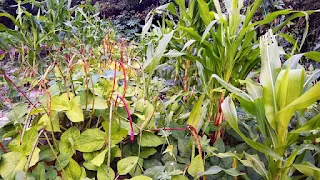
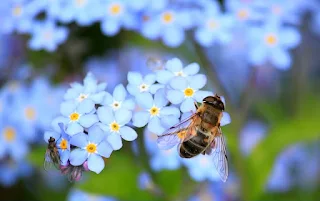

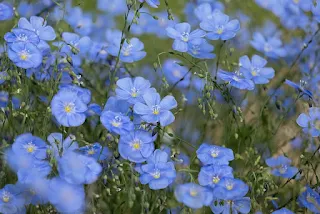
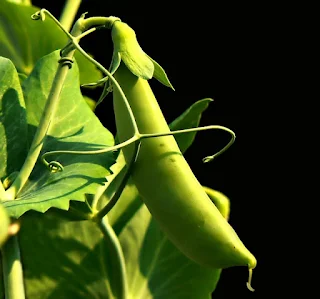
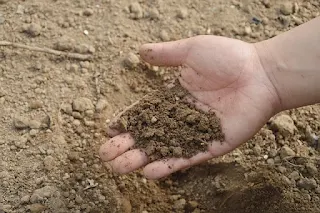
No comments:
Post a Comment